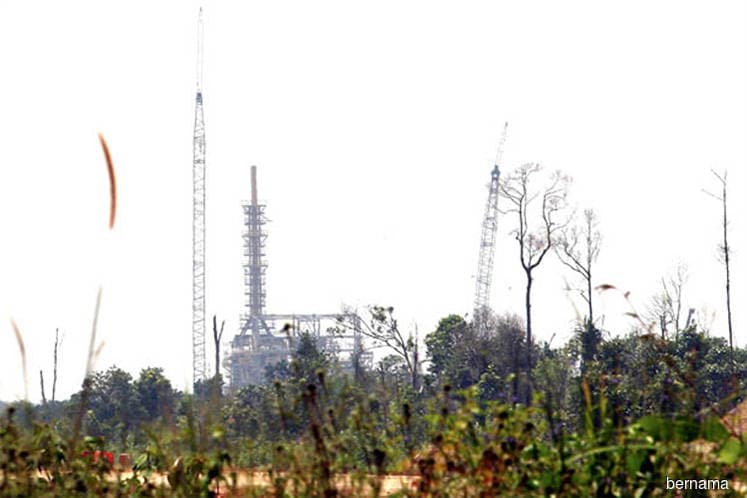
This article first appeared in The Edge Malaysia Weekly on November 5, 2018 - November 11, 2018
SINCE Lynas Corp set up its rare earth separation plant in Gebeng, near Kuantan, in November 2012, Malaysia has become one of the top producers of rare earth oxides (REO) in the world.
However, the plant, one of the world’s largest, has not spurred the development of a high-tech industry around it, unlike the Eight Samurai effect in Penang — the catalytic role played by the pioneering multinationals in spearheading the country’s high-tech manufacturing industry.
Apart from local regulations, a key reason why that has not happened with Gebeng is that all of the plant’s production is exported to China, Japan, Europe and North America.
This is something that Charles Lew of Hastings Technology Metals Ltd wants to change. “Malaysia has the right ingredients to become the centre of excellence for the rare earth industry, with high-tech industries sprouting around it,” says Lew, who is executive chairman of the Australia-based and listed rare earth mining company.
“For example, the development of the electric vehicle industry in the region will increase the demand for rare earth permanent magnets. If Malaysia has a steady supply of REO, foreign companies with the technology to produce rare earth permanent magnets will set up shop in Malaysia,” he explains.
In turn, a high-tech industry ecosystem will sprout up in Malaysia in tandem with the development of electric vehicles and smart technology devices in the region, he adds.
China produces 85% of the world’s supply of REO. This has caused tension with countries whose industries consume a lot of REO, such as the US, Germany and Japan.
In 2010, China reduced its REO export quota by 40%, which led to prices soaring. The US and its allies brought the matter to the World Trade Organisation (WTO) in 2014.
In early 2015, China dropped its export quota after failing in its appeal to the WTO to be allowed to keep it as an environmental conservation measure.
This overdependence on China has led to consumer countries looking for other producers. While some companies have set up operations in the US, low REO prices due to China’s overproduction have driven producers in high-cost locations out of business.
That is among the reasons Lynas chose to set up its separation plant in Malaysia as the cost of doing business is lower than in Western Australia, where its mine in Mt Weld is located.
However, Lynas’ presence in the country does not mean a secure supply of REO for Malaysian companies or foreign companies located here. This is where Lew feels Hastings can fill the gap.
Lew, a Malaysian, is the largest shareholder of Hastings, which holds the rights to explore and develop rare earth reserves in Yangibana, Western Australia. Malaysian investors hold 70% of Hastings’ shares.
“I know a German company that produces batteries in Pekan, Pahang, was looking to set up a permanent magnet plant in Malaysia. However, as we don’t have a secure supply of REO, it could not set up the plant,” says Lew. The company he is referring to is Vacuumschmelze GmbH.
One reason why Lynas does not make its REO available for the Malaysian market is because it entered into offtake agreements with Japan Oil, Gas and Metals National Corp (JOGMEC) for 8,500 tonnes per annum of REO.
Together with Sojitz Corp, JOGMEC lent US$250 million to Lynas for the development of its Gebeng plant in March 2011. The offtake agreement is part of the lending arrangement.
Having a steady supply of REO is important if the Malaysian government, which is planning to set up a third national car company, wants it to succeed, says Lew.
This is because the third national car project is expected to produce energy-efficient and green vehicles that meet safety and environmental standards in Japan and the European Union.
In December 2013, Lew acquired a 15% stake in Hastings to become its largest shareholder and in January 2014, was appointed executive chairman. Since then, other Malaysian investors have come on board.
Hastings was awarded the rights to explore 650 sq km in Yangibana in March 2014. Two years later, it was granted 21-year mining leases, covering an area of 50 sq km there.
According to an October 2017 resource report by Australia’s Joint Ore Reserves Committee (JORC), the 50 sq km area contains measured, indicated and inferred total resources of 21 million tonnes of rare earth reserves.
Hastings has budgeted pre-production capital expenditure of A$335.3 million, of which A$130.2 million is for the development of a processing plant and A$105.1 million for non-process infrastructure. It has invested a total of A$75 million so far to develop the Yangibana reserves.
Hastings targets to start mine construction by the first quarter of next year, with production to start by the second or third quarter of 2020. The mine has the capacity to produce 13,800 tonnes of rare earth carbonate per annum, says Lew.
The company has signed offtake memorandums of understanding with three Chinese companies and Thyssenkrupp Raw Materials GmbH, with the latter committed to source 5,000 tonnes per annum of Yangibana mixed rare earth carbonate for 10 years.
Save by subscribing to us for your print and/or digital copy.
P/S: The Edge is also available on Apple's AppStore and Androids' Google Play.